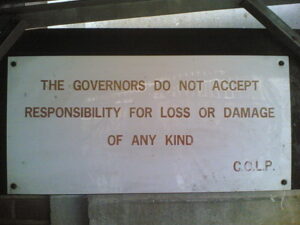The Kenosha Unified School District has problems. In the next two years, the district expects to lose 1,10 students. More immediately, though, it expects to have a budget deficit of $19.5M in Fiscal Year 2023. The two are not unrelated but the deficit is not the direct result of the enrollment decline.
Part of KUSD’s budget woes come from increases in expenses like salaries and healthcare costs. (Things could be worse. Wisconsin state law caps inflationary salary increases but does not provide funding to offset inflation.) The district also expects to lose money because its enrollment is declining. The K-12 funding formula in Wisconsin is based in part on the number of enrolled students, so enrollment declines have financial consequences. In the past decade, KUSD’s enrollment has declined by more than 15%.
KUSD administrators are hoping to make what amounts to $20M in budget cuts without laying anyone off. Unfortunately, the budget deficit may be too large to avoid at least some personnel cuts. According to the interim superintendent, the district plans to take advantage of a slew of expected retirements. It also plans to limit the use of teachers who are not yet fully certified.
Reducing the budget deficit means cutting payroll expenses
KUSD is dealing with a structural debt. A structural debt is one in which expenses exceed revenues even when revenue is maximized. Part of KUSD’s problem stems from the fact that it hired a lot of permanent employees in the past decade (while its enrollment declined). In past years, KUSD bought itself time by negotiating lower healthcare costs. Between COV(D-19 and rapidly rising inflation, that’s not an option this year.
KUSD has about $45M in unspent federal COVID relief reimbursements, but the district will use those funds for other expenses. Plainly put, KUSD’s budget deficit is the result of over-hiring administrative staff, even as its enrollment declined. The district and its employees must now pay the price for years of unrestrained hiring.
Salary and benefits costs add up. When the oversight body authorizes the hiring of permanent employees, it expresses confidence that it will have the ongoing revenue to support those hires going forward. In an environment where enrollment is declining, funding is not going up.
Declining enrollment deals a massive blow at the community college level because enrollment affects two sources of revenue: tuition and state appropriation. An unabated hiring spree – which expresses the same revenue confidence – simply doubles the budgetary impact of declining enrollment.
Hiring should never be taken lightly at a public institution. The governing body has a responsibility to carefully examine and weigh each hire in the context of its long-term impact on the institution’s budget. WCC’s Board of Trustees does not do that. Instead, they perfunctorily approve any hire placed in front of them by an Administration that has demonstrated a chronic inability to control its own spending.
We need better oversight at WCC.
Photo Credit: Truthout.org , via Flickr

































